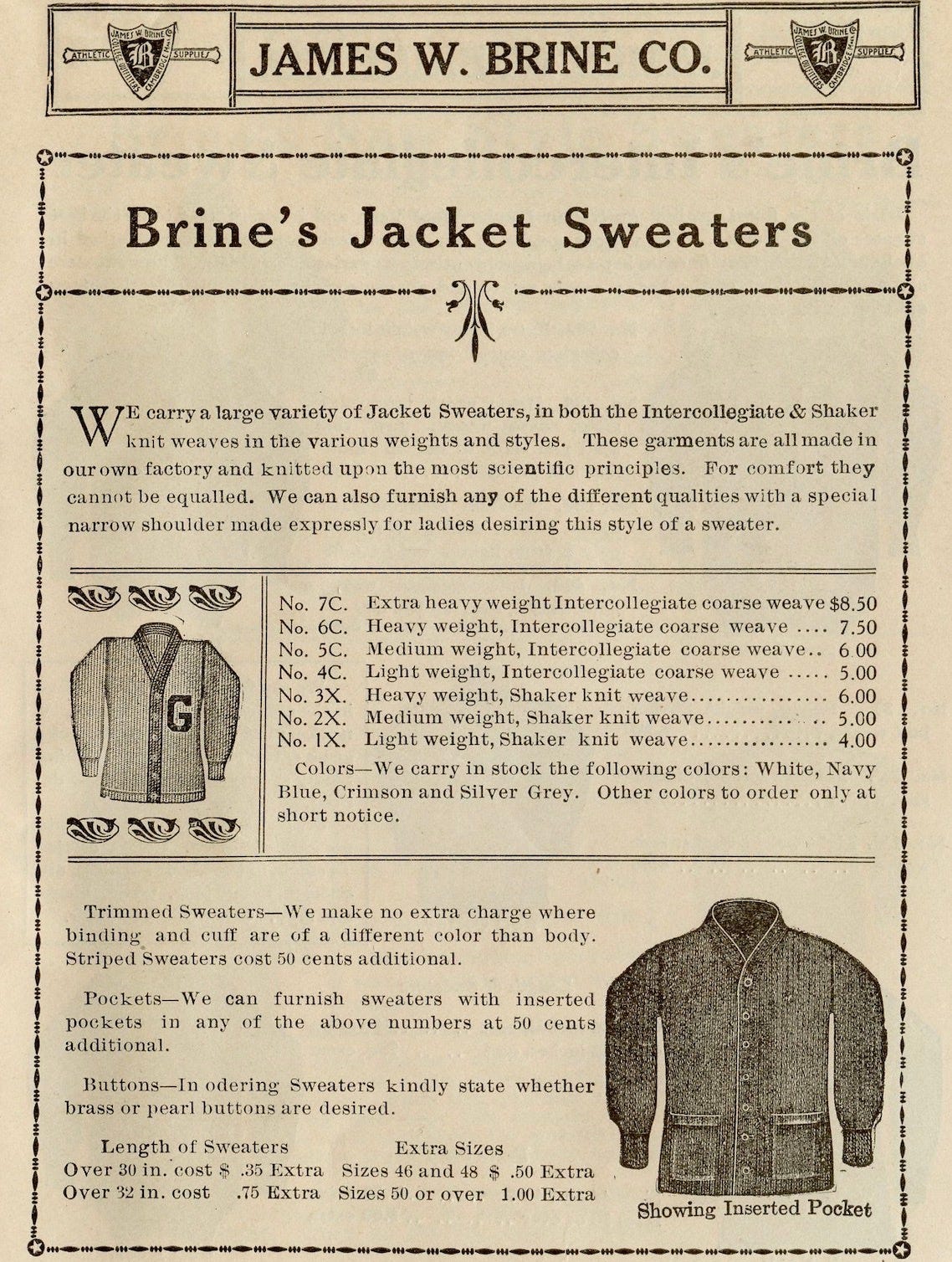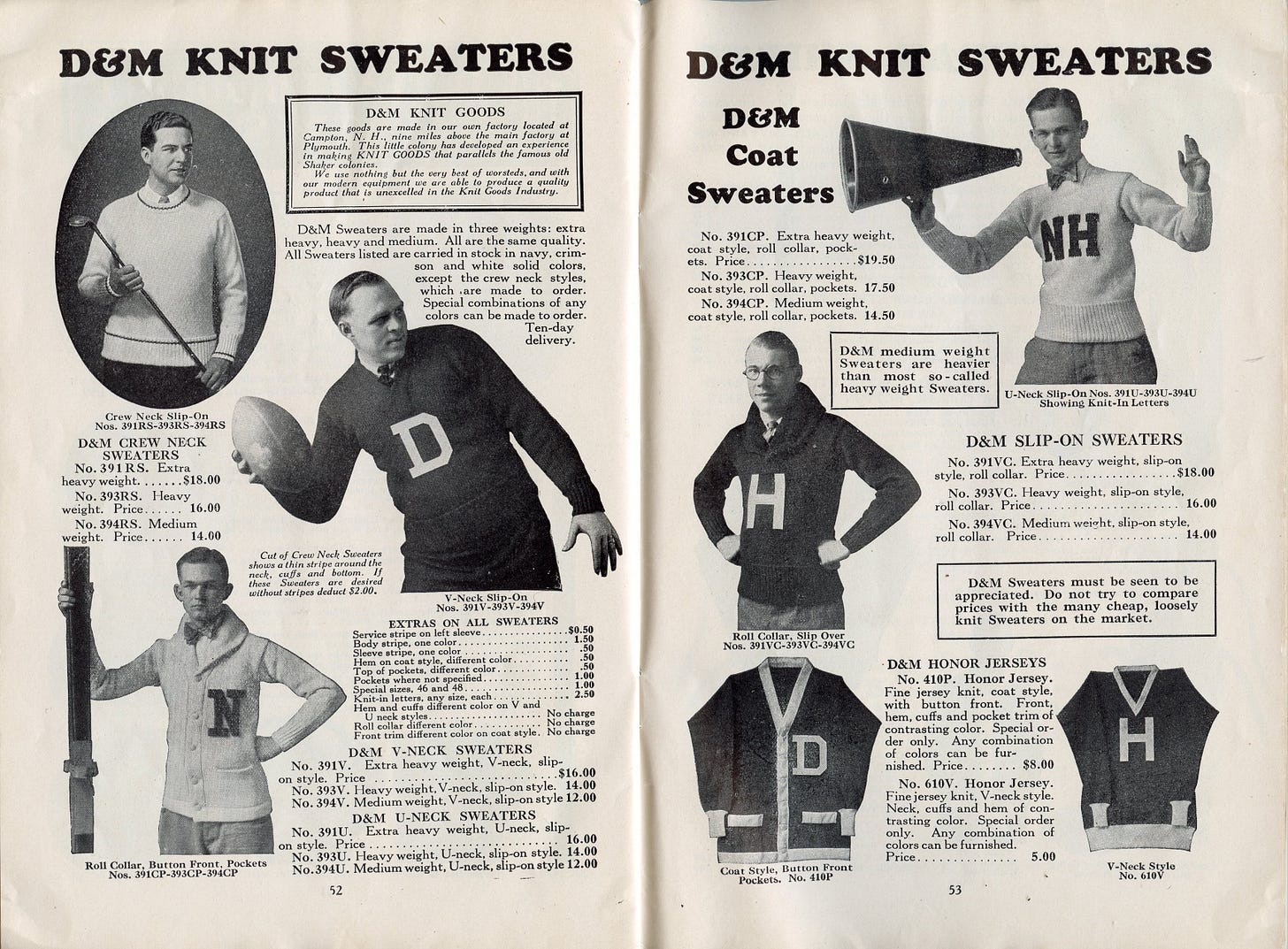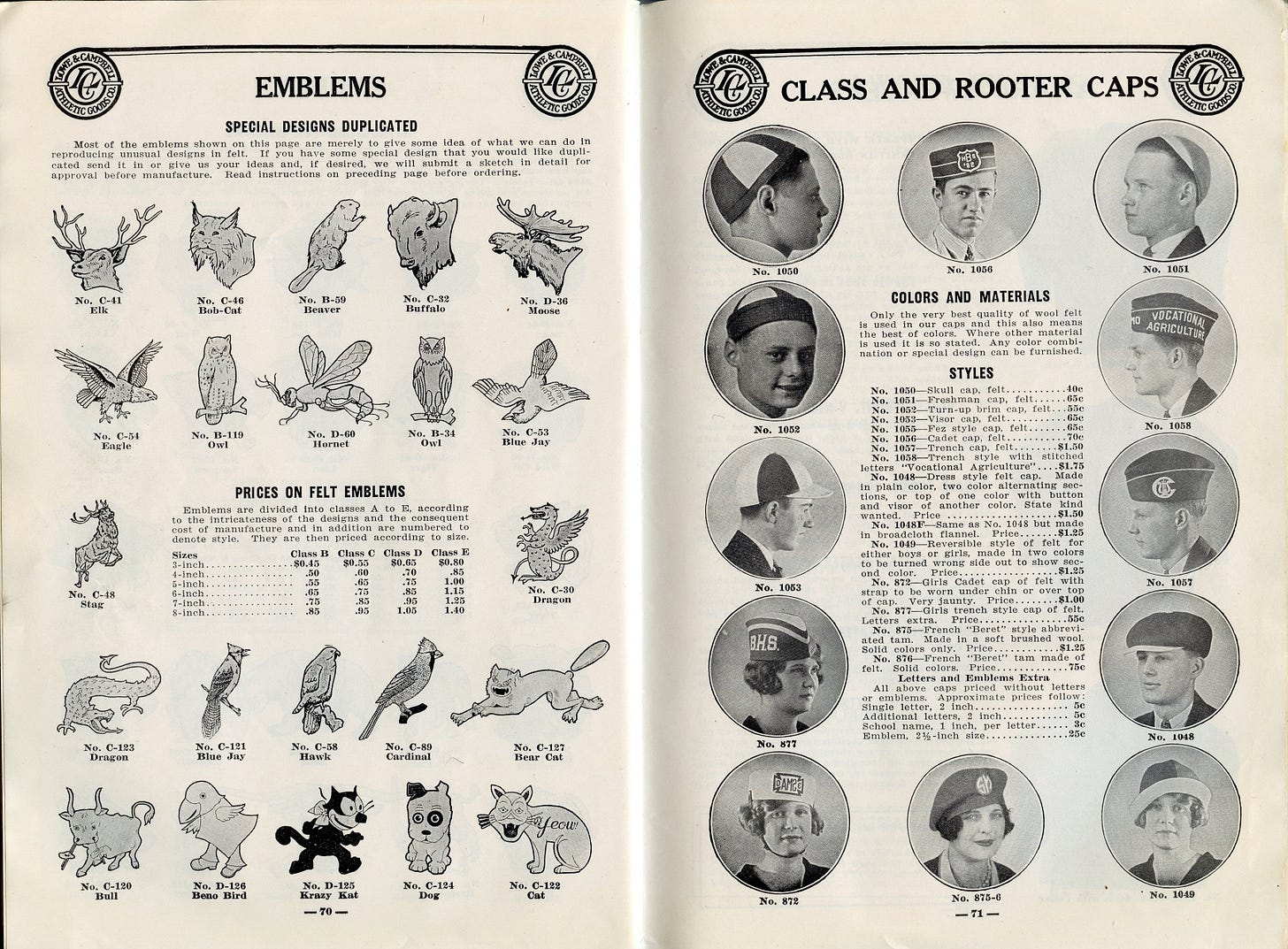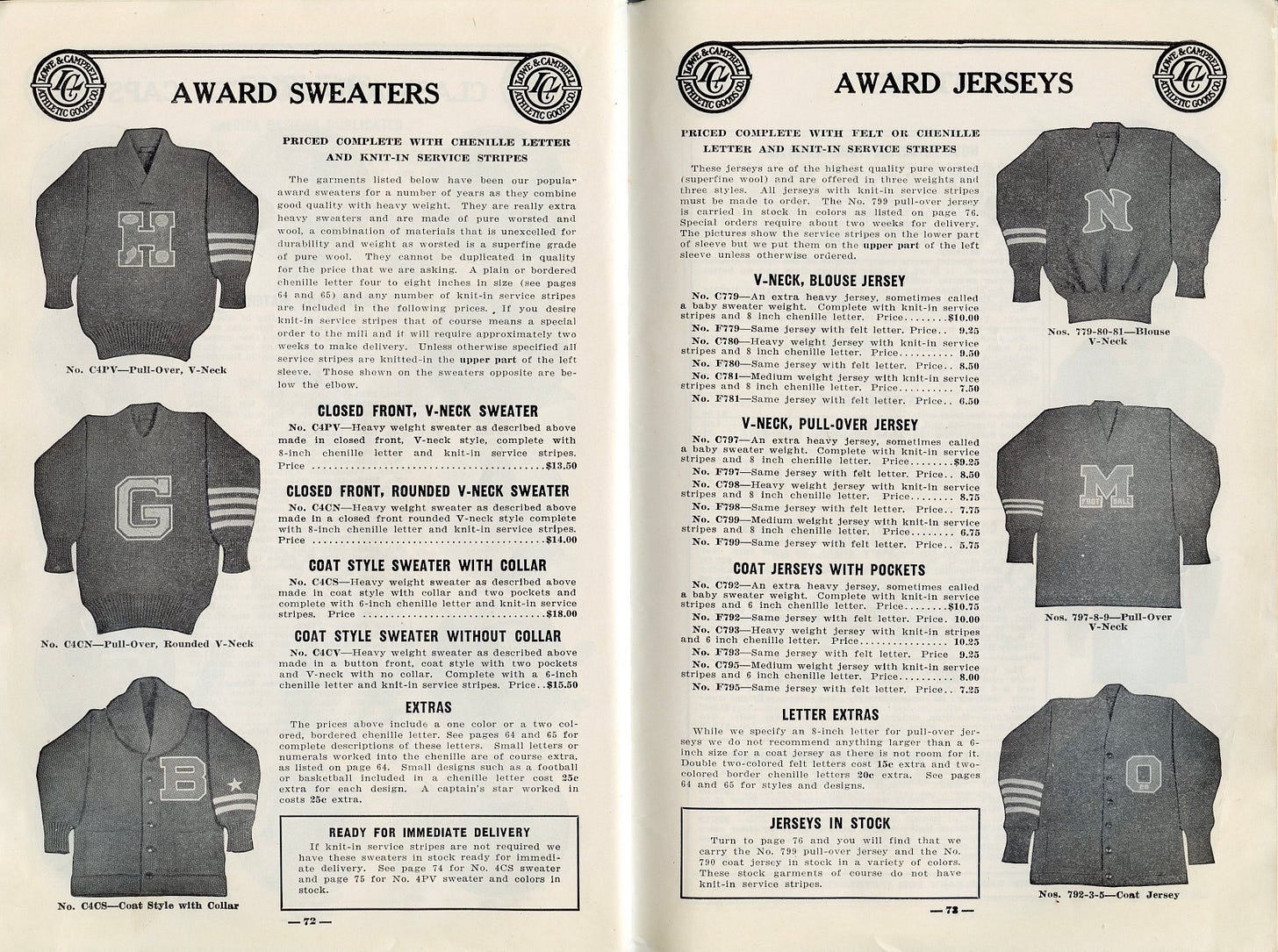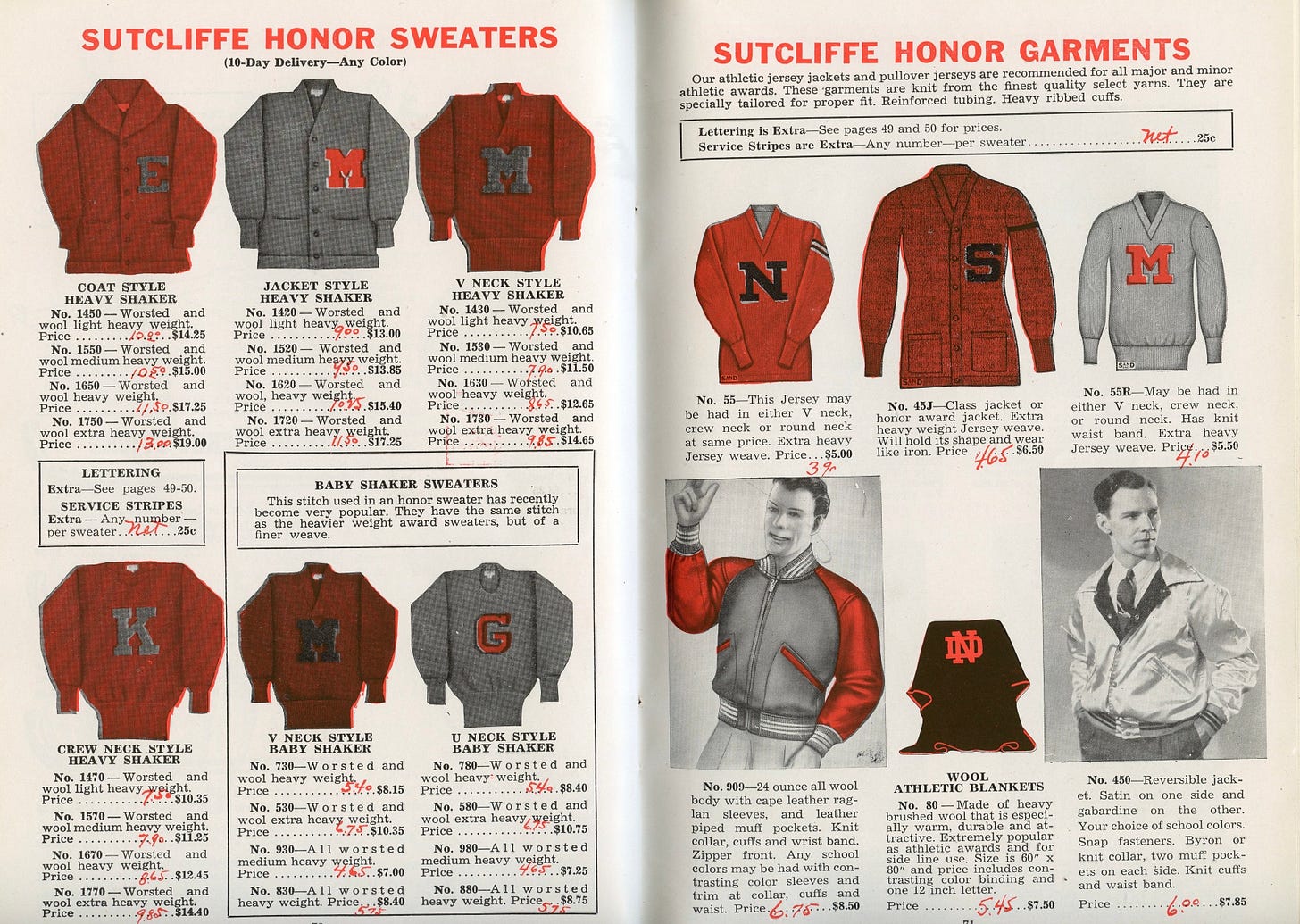Honoring Letter Sweaters and Jackets
This article previously appeared on Uni Watch on January 22, 2023.
Early football uniforms were often plain garments, with a wool or cotton sweater in the school's dominant color topped off by striped sleeves or a letter representing the school name on the chest. By the early 1890s, a tradition developed, allowing those playing in the big games at the season's end to keep their jerseys. Those jerseys became prized possessions because so few earned the right to wear them. Of course, athletes in other sports wanted similar recognition and practice spread. However, some schools used distinct monogram designs and sizes by sports so everyone on campus could distinguish those who played football from those battling on the tennis court or golf course.
Initially known as varsity sweaters, they became football, letter, or honor sweaters after the turn of the century. Some schools awarded watch charms and blankets rather than sweaters, but sweaters became dominant, changing only with the whims of fashion. Class numerals were around by at least 1905 when, for example, Teddy Roosevelt, Jr. earned one with Harvard's freshmen football team.
In addition to awarding letter sweaters across sports, they shifted from the heavy wool suitable for playing in a November football game to cardigans and other all-season garments with few tears and repairs. However, the changeover was not a clean break as many sweaters were marketed both for on-the-field use and to impress the sorority gals, the difference often being the weight of the wool. Also, cardigan sweaters with buttons clearly were not meant for the playing field.
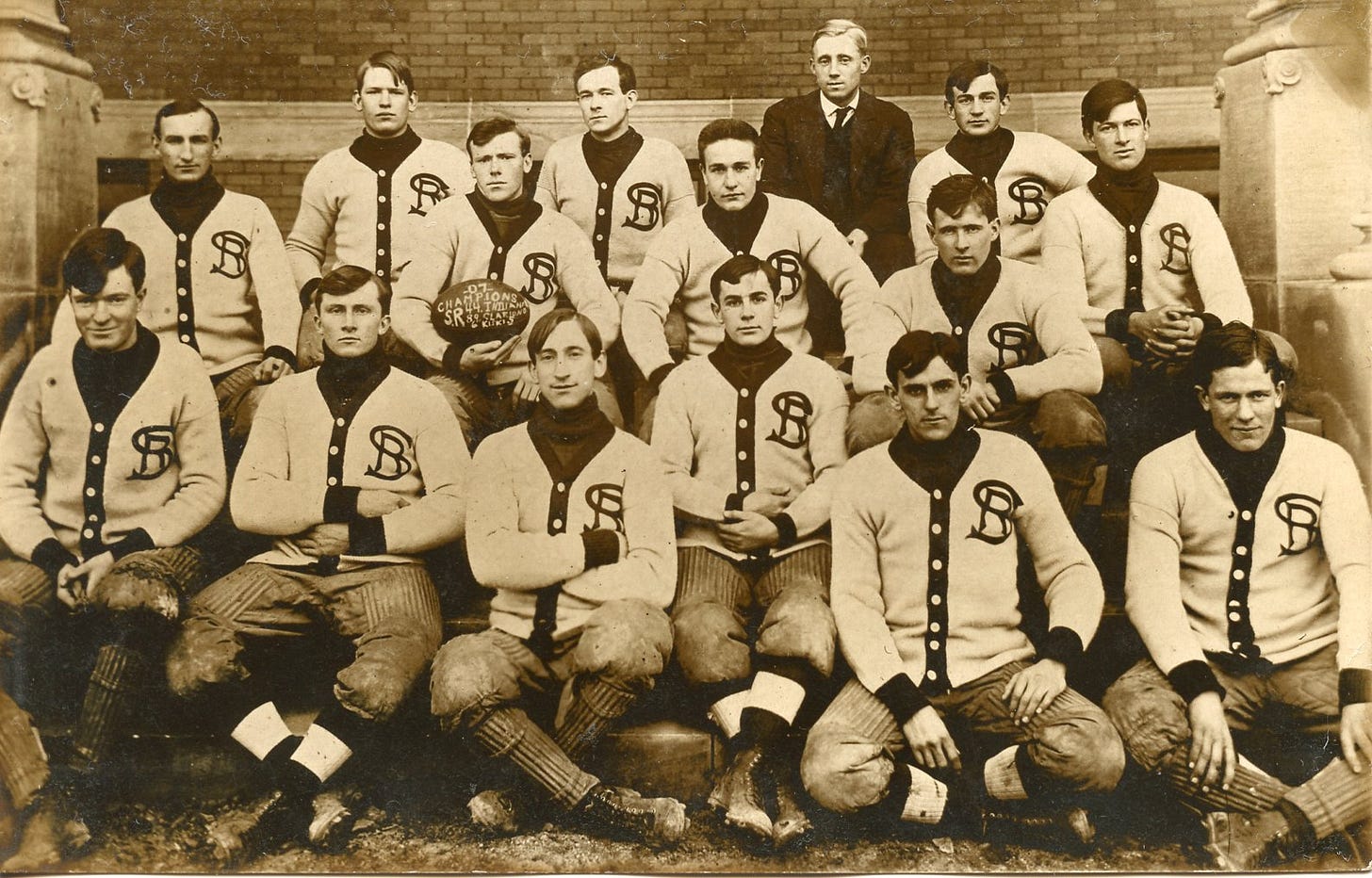
Some teams warmed up for games on chilly days wearing team-issued sweaters that buttoned up the front. Still, sweaters targeted for awards increasingly took on off-the-field forms and functions. Pockets, trim, and extensive use of white looked good on the sidewalk but had little value on the sideline.
By the late 1920s, honor sweaters had moved beyond only letters and included mascots or emblems. And while not directly related to varsity sweaters, nothing impressed friends and foes more than fans wearing a class or rooter hats in the stands.
Letter, varsity, or honor sweaters became the norm at the college and high school levels. Some athletic departments and booster clubs paid for these items, even awarding different versions depending on the level of achievement (e.g., number of quarters played during a season), with chevrons or stripes indicating the number of letters earned, and stars designating captaincies and all-conference honors.
Some locations awarded the letter only, making the athlete responsible for buying the appropriate sweater from the school or local sporting goods shop. Although schools tended to have a preferred model worn by all athletes, athletes increasingly had options, and they began exercising them.
The next innovation in letter-related gear came in the early 1930s with the arrival of the letter jacket. First reported at Trinity University in San Antonio, letter jackets remained in Texas and Oklahoma for the next few years before exploding onto the national scene and making their way into the national catalogs.
Just as the range of sweaters expanded over time, so did the options for letter jackets, including the reversible option. Whether the wearer had the letter sewed on the inside, outside, or both is unknown, but they had to look sweet at the sock hop.
Best as I can tell, the letter jacket quickly superseded the letter sweater in popularity, at least in northern climes. The jackets soon had massive emblems sewn on their backs and medals sewn on in quantities making one side sag.
Marching bands and other school groups later adopted them. Regardless of whether they wore a sweater or a jacket, there was nothing like a proud prepster or collegian on the day they wore their new honor garment around town for the first time.
Click here for options on how to support this site beyond a free subscription.


